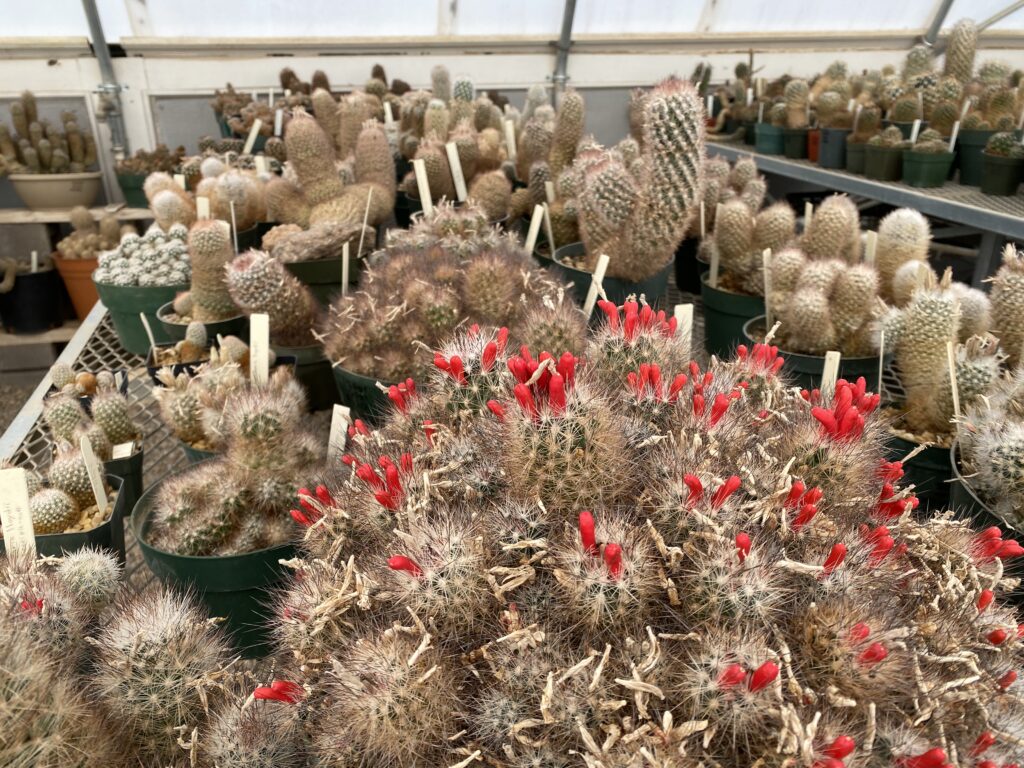There’s a West Texas Tri-County Triangle of Big Bend country in Fort Davis, Marfa and Alpine, with a Marathon extension. About 30 driving miles separate them from one another but they’re worlds apart in size and vibe. Marfa is an art mecca. Alpine is the largest town and county seat. Fort Davis is tenaciously trying to keep the lights on and businesses open.
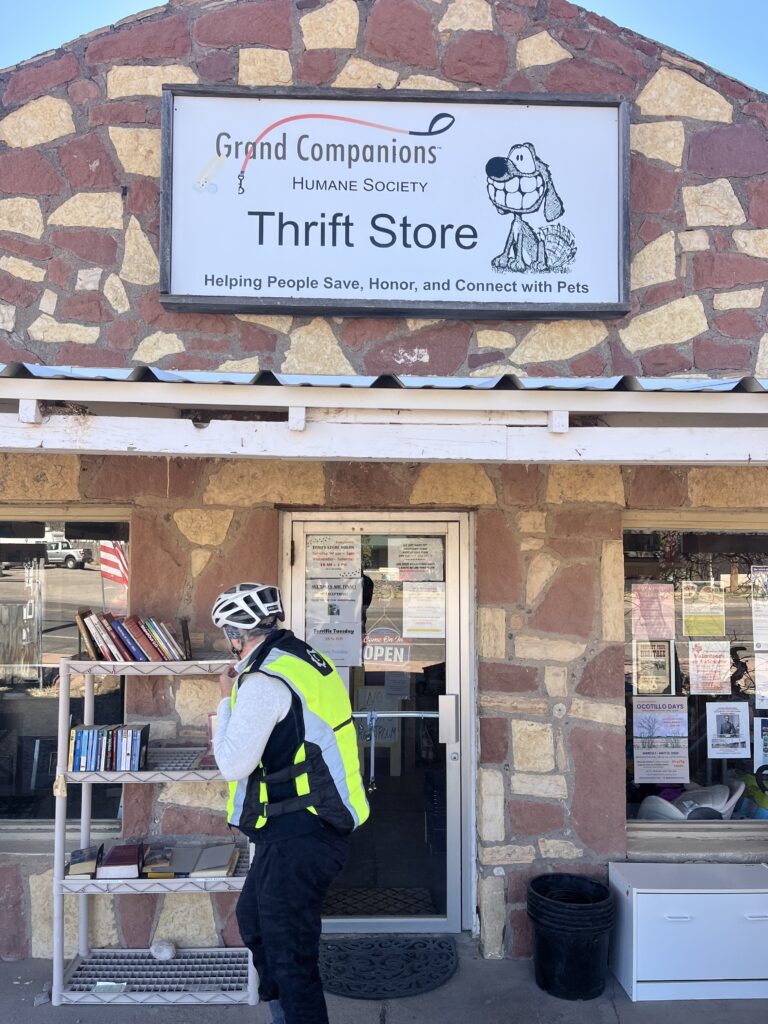
Camping in the Triangle is mostly long-term commercial RV’ers, with the exception of Davis Mountain State Park. The highest elevation park in Texas with the lowest temps we’ve seen this trip, Davis Mountain is the first public land to pitch a tent north of Big Bend. Just above freezing most nights, we’ve run out of propane trying to keep our home base livable for Triangle expeditions. Bikers and van-lifers roll through for a hot shower and an overnight while we are homesteading for five nights.
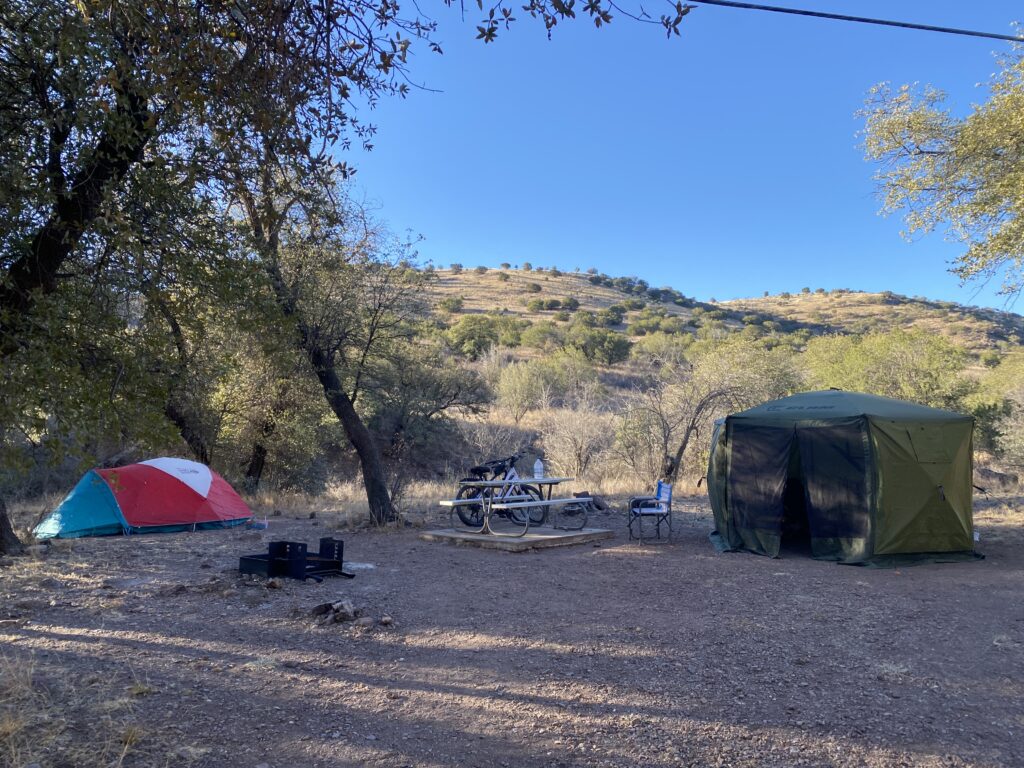
The town of Fort Davis is three miles downhill from the park on a racing Como ride of morning wind blowing through four layers of fleece while streaming tears freeze on your cheeks. The whole town is about a mile long, with Rock and Raul’s BBQ at one end, Town Hall at the other, with the rest anchored by a National Historic Site that was the westernmost military outpost during the Indian wars. If you’re interested in that, you can read Decoding Fort Davis from our 2022 visit. Go history!
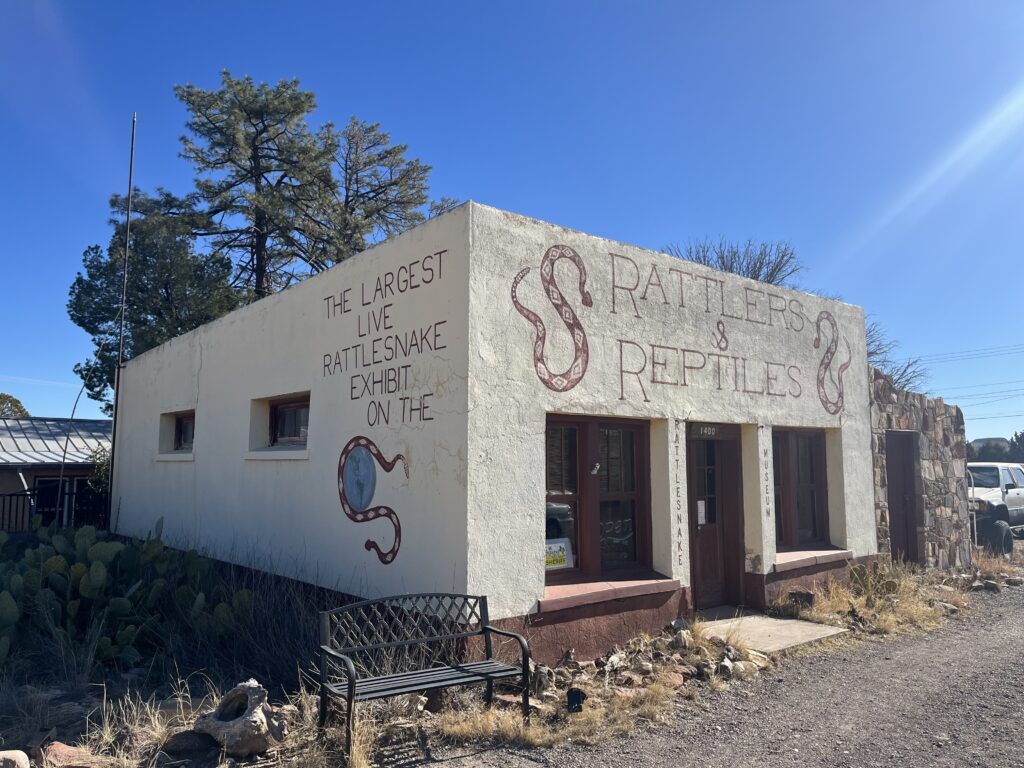
People come to Fort Davis mostly for the Fort, but also for stargazing parties at University of Texas’ McDonald Observatory, the Cactus Museum at the Chihuahuan Desert Nature Center, Skyline Drive for a top of the Mountain View and the last stop for gas and groceries before crossing the Davis Mountain range.
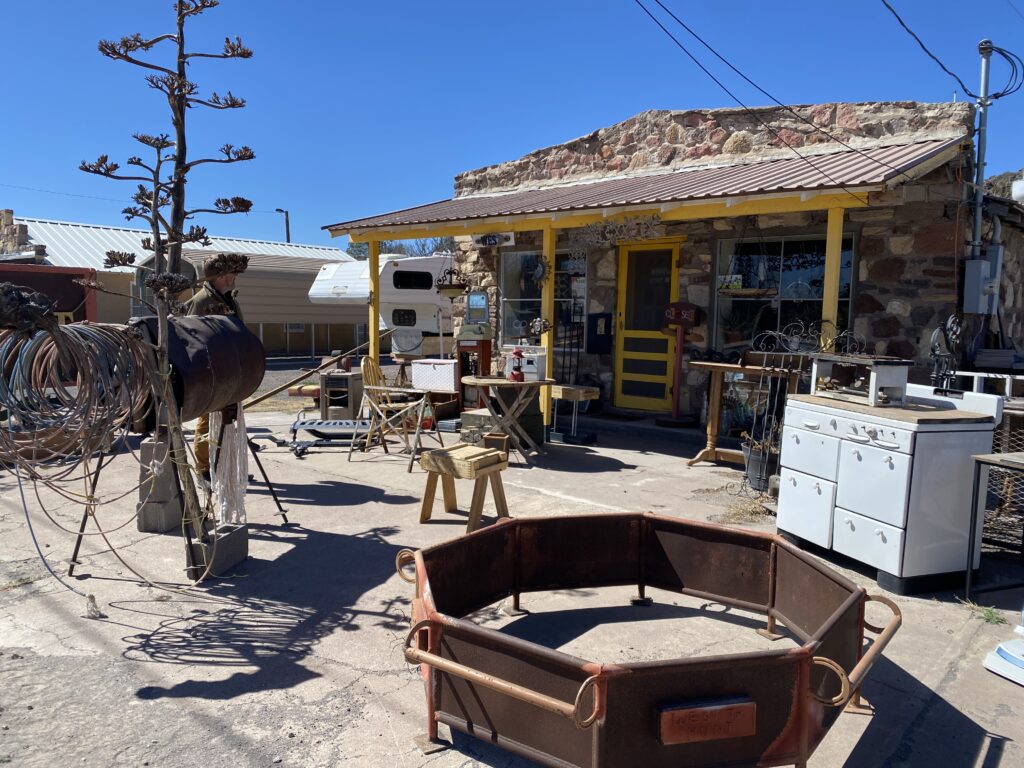
Two years ago nothing was open during our short stay, and two years later it was much the same. Fort Davis is tenacious, hanging in there with its makeshift stores of collectables, junk, antiques, and western memorabilia that may or may not be open when you pass through. Text them and maybe they’ll come open up. The Fort Davis Drugstore Hotel still anchors the tourist district but the adjacent ice cream parlor is looking for a new tenant.
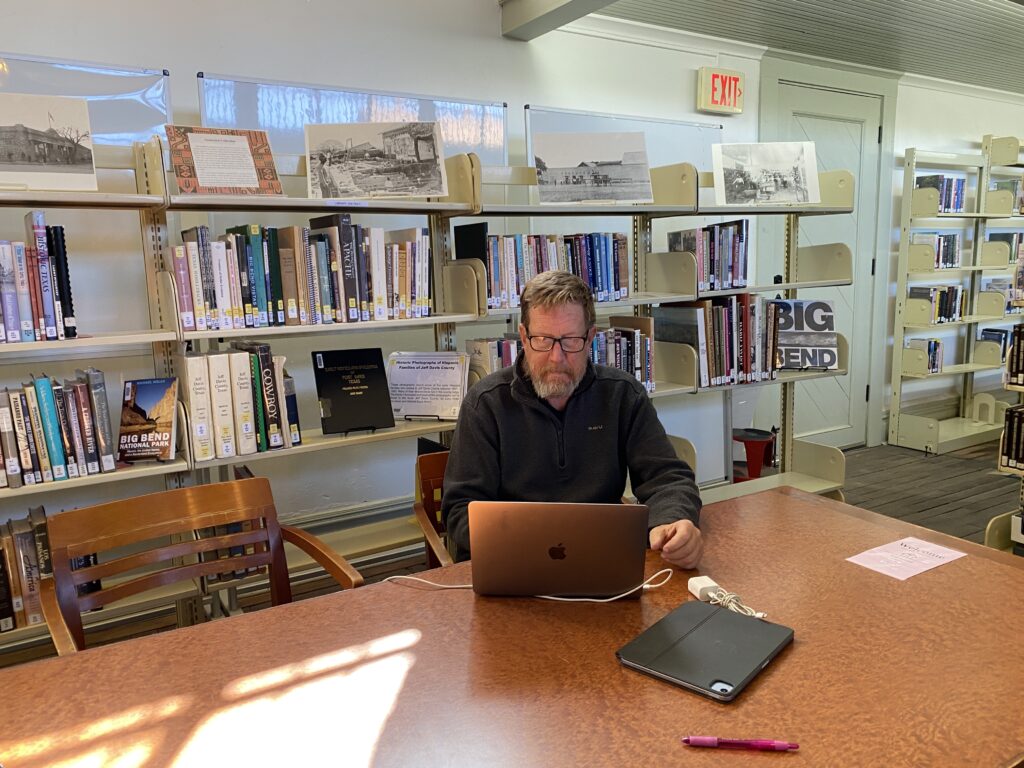
We spent most of our day in the library, famous for its guided elevator and jailhouse architecture, manned by a volunteer team eager to prove that Fort Davis is the friendliest little town in Texas. We nestled in for fast WIFI at a comfortable table, but there was hot chocolate, tea, coffee, and endless conversation at the front desk if we wanted to partake.
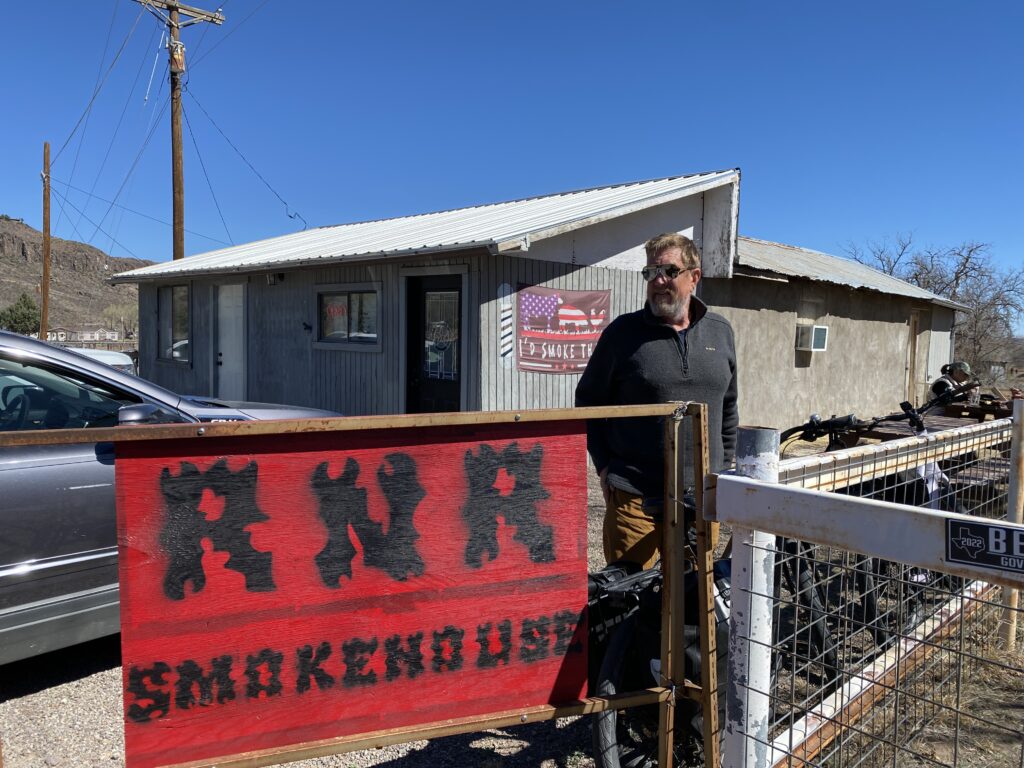
The star of our bike tour of town was Rock and Raul’s Smokehouse, serving up Texas’s state food, Brisket!, in an eclectic setting. You can eat in the black walled dining room in a cigar bar like setting, or balance your plate on a warped picnic table outside. Either way, it’s waitress service with gold plated flat ware, cloth napkins, and enamel plates.
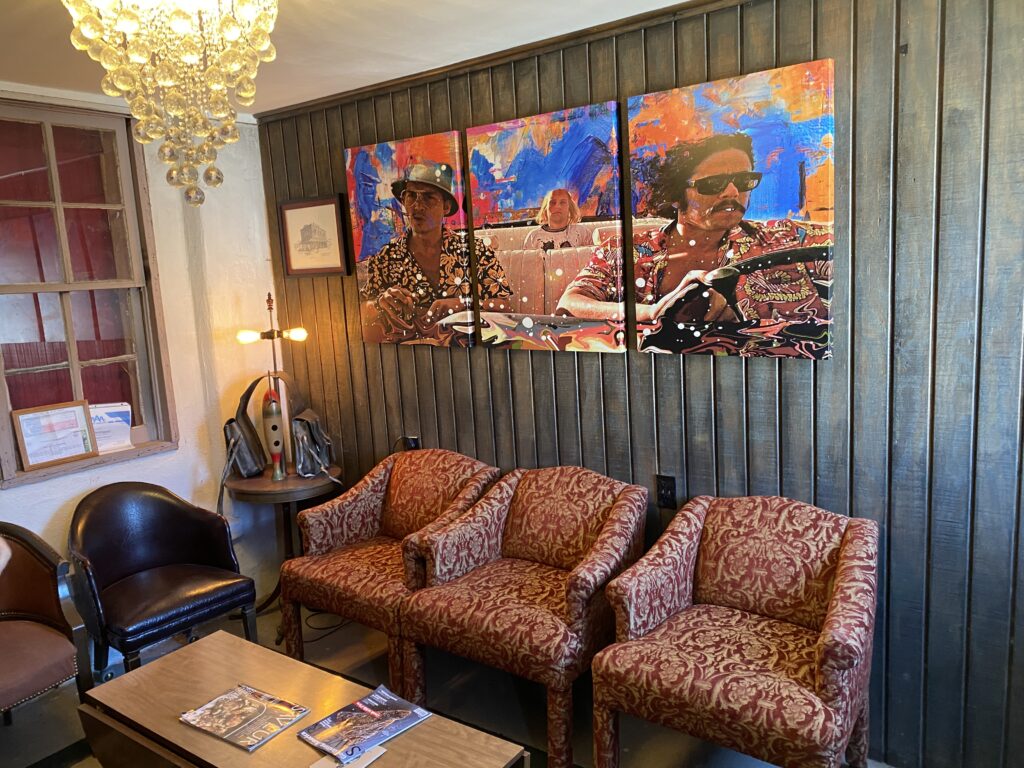
The food presentation is Michelin star worthy except with big portions. The couple that own RnR Smokehouse are not named Rock or Raul, they just love music (No Doubt, Nirvana, Hendrix) and had a great uncle named Raul. That works for us and everyone else in Fort Davis.
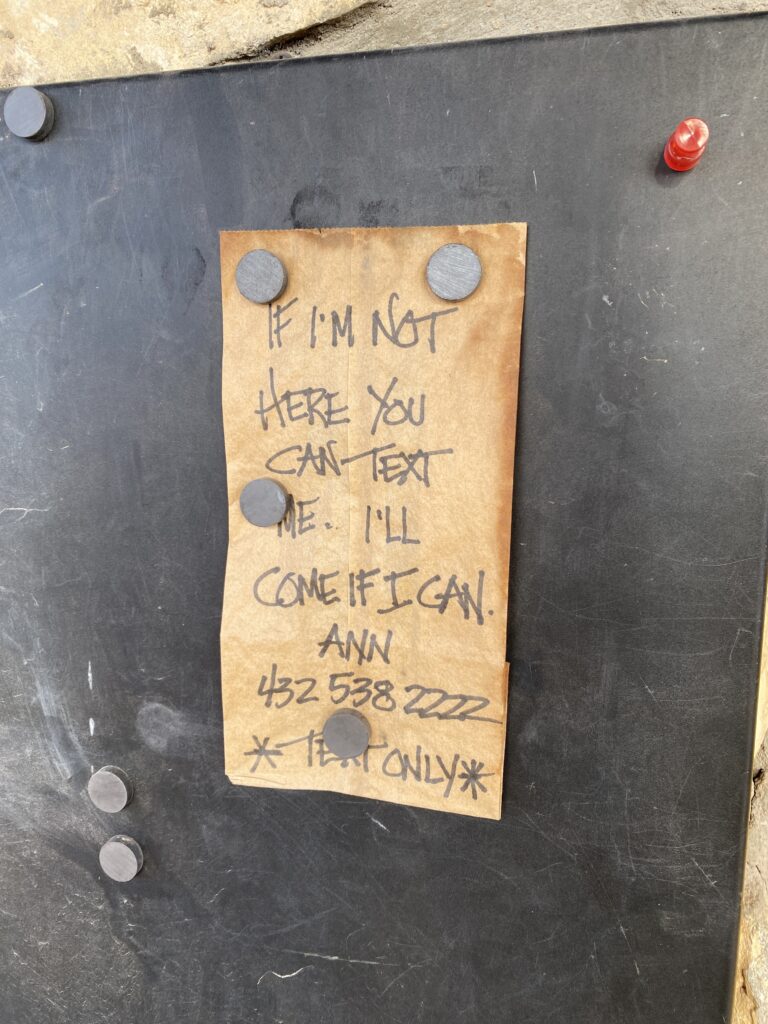
Being in the hills, the temperatures are colder in Fort Davis than down below in the Chihuahuan desert.. Most sane campers at the State Park are in vans and small trailers. A few of guys are tenting/motorbiking and combat the freezing morning temperatures by getting on the world early. For us, the Clam shines has an outdoor kitchen and wind break. Hot coffee and fresh bacon add delicious aromas and precious heat to shake off the 6 am cold, Taylor Swift style.
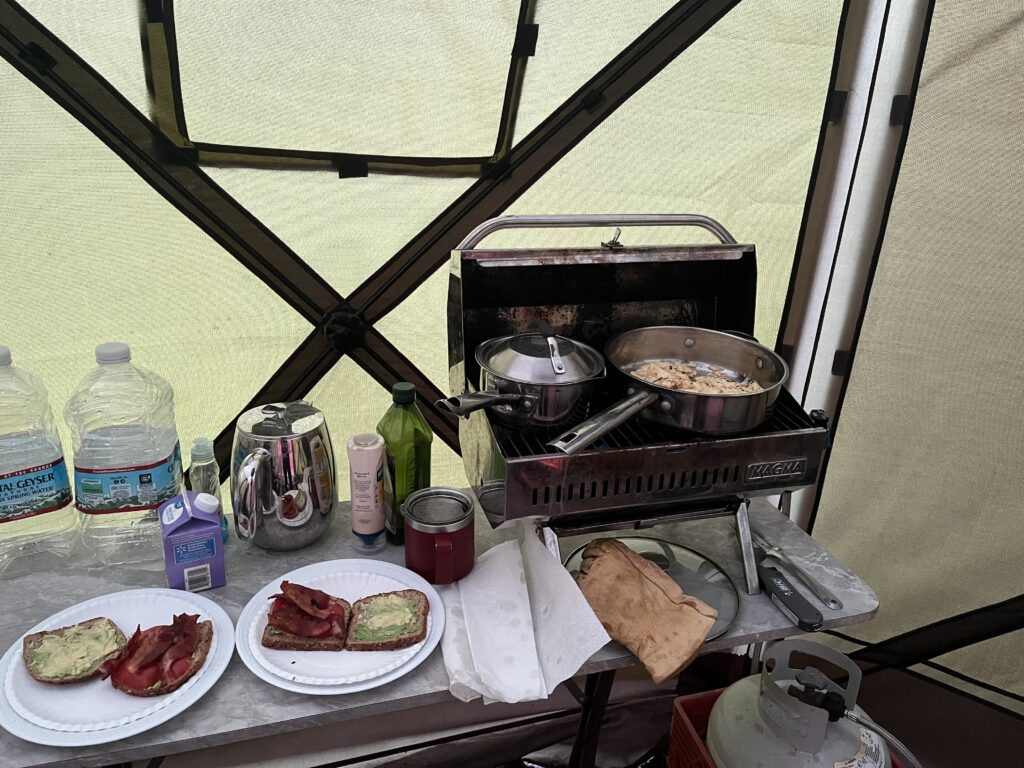
Not necessarily a fan of the botanical garden, especially in winter when everything is dormant, the Cactus Museum was an exception due to Sheri’s intense love of thorny nature. While we’d seen plenty of prickly pear, agave and yucca in the Big Bends, this was a chance to see 200 varieties native to the Chihuahuan Desert in a greenhouse setting. As thrilling as that was for her, it was matched by Eric’s stroll through the mining exhibit showcasing the engineering behind the extraction of silver and gold. Volunteers are hosted on the 500+ acres of botanical gardens and nature preserve for a month or more at a time. The wheels are turning …
